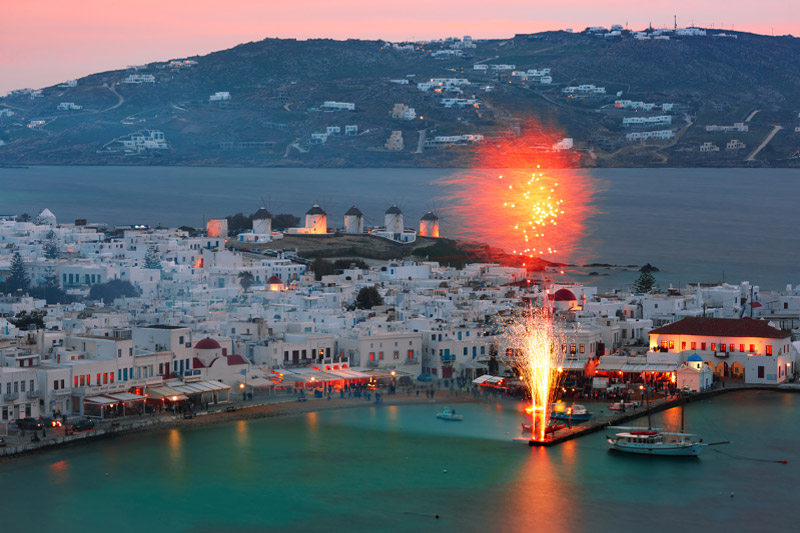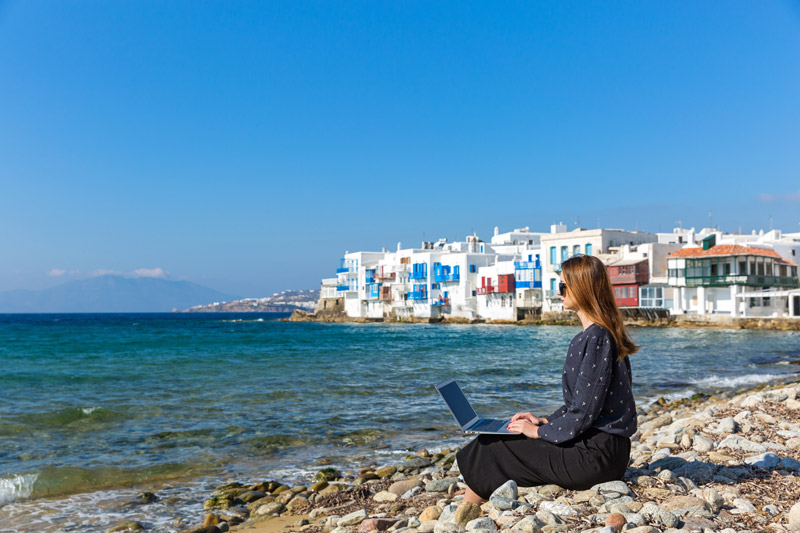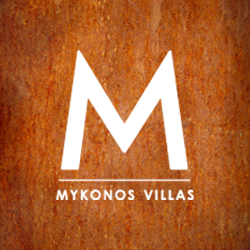Contrast may be a be a great source of creativity and innovation. Take Mykonos, for instance: the reason why, for decades now, it has gained the reputation of the No. 1 party island in Greece, is not only because of its notorious clubs and DJ parties, but also because of its local, traditional festivals that take place every summer in different locations and are a must-go for visitors!
Contrast is a strong element of Mykonos’s DNA. One can recognize it in every step; from the 5-star luxury villas and resorts to the super clean, recently whitewashed “chez l’ habitant” rooms to let, located in small houses with blue-painted windows and pink bougainvilleas. Or, from the extravagant, sophisticated Michelin-starred restaurants to the humble fish taverns and food trucks. Whatever you think of, you’d better be ready to meet its complete opposite, as this blessed Aegean island features a perfect blend of a top luxury, rocking tourist destination with a place where local traditions are also very much alive!
Of course, the same applies for having (huge) fun in Mykonos! Especially in the heart of the summer, dancing day and night includes not only attending champagne showers at popular beach bars, jazz nights at exclusive bars, international rock festivals and parties with DJs, but also local festivals with traditional music and dances, tsampounas (local musical instruments), mouth-watering food and oceans of wine!
In addition to the above, you don’t need an invitation to attend the feast. Locals will be delighted to welcome you and make you part of their crowd.
In Mykonos, as everywhere in Greece, festivals have mostly to do with religious holidays and are a way of life, connected with local traditions and the loud Greek temperament. Food-wise, the festival menus usually include boiled lamb, traditional pies, ‘kopanisti’ cheese and the famous ‘louza’ cold cuts.
Some of the most exciting local summer festivals are:
- Feast of the Virgin Mary in Tragonisi, in June. The feast takes place after the service but only men are allowed!
- Also in June, the feast of Saint Kyriaki in Delos. It is the only day in the whole year when people are allowed to stay on the sacred the island in the afternoon. The feast starts after the evening service and the blessing of the bread.
- The festival of Saint Panteleimon in late July, which takes place in Marathi, in the medieval monastery.
- The festival of Panagia Tourliani, on the day of the Assumption of Mary (August 15th) in Ano Mera, in front of the Monastery.







